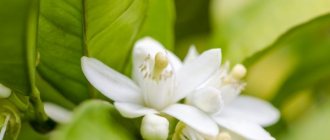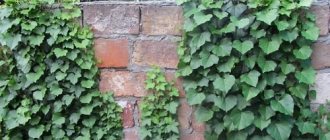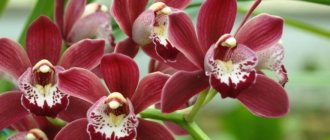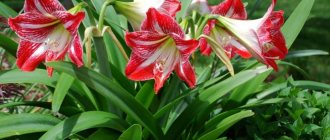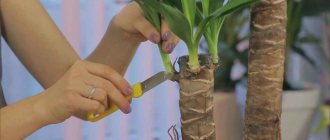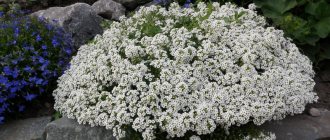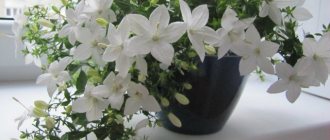What is this?
Gerbera is a perennial plant that belongs to the Asteraceae family. This type of flora does not belong to indoor plants. Flowers can grow in greenhouses or open ground; they have a stem whose height is more than 0.5 meters. There are low and miniature varieties that do not exceed 30 cm in height.
Gerberas have become widespread throughout the country. There are many varieties of this flower. They grow well in the wild in Madagascar and Africa. The historical homeland of the flower is South Africa.
At first, the flower was not in great demand, as it was considered very capricious, but soon it became very popular - both professionals and beginners began to propagate it in different countries.
Transplantation process
With the arrival of autumn cold weather, garden African chamomile is removed indoors. First, prepare a container where the plant will overwinter. Its size must match the volume of the rhizome (but not less than 20 cm in diameter).
A clay pot is considered the best option, since the material allows air to pass through, saturating the soil with oxygen. The selected container is doused with boiling water to disinfect it. Expanded clay drainage is laid at the bottom.
Dig out the bush along with a lump of earth so as not to damage the root system. Then they are carefully placed in a pot and strengthened with a substrate for which soil and river sand are mixed in proportions of 2:1.
In this case, the neck of the socket is not buried. The transplanted flower is transferred to a cool and ventilated place with diffused lighting and air temperature +8 ℃…+10 ℃. A greenhouse, veranda or loggia are perfect.
During wintering, gerberas do not need to be fed. Watering is also reduced, but the soil is not allowed to dry out. When the weather is warm again, the bush is returned to open ground.
Features of reproduction
This flower can be propagated in the same way as with indoor plants. The most reliable methods that are suitable for the home are by seeds or dividing the bush. The seeds are planted in the ground in the spring, after which they are planted in boxes, and after a while they are transplanted into pots.
Gerberas need to be fertilized after they begin to grow. Afterwards it needs to be transplanted into a pot. Reproduction by dividing a bush is a troublesome task and must be done very carefully. At the beginning of March, the plant is divided into several parts, leaving 3 leaves on each bush.
Afterwards, the roots are trimmed and disinfected with charcoal. They are planted in separate containers - you need to ensure that the growing points are not covered with soil. Growth begins after a month.
Cuttings
Gerbera cuttings can be carried out not only in greenhouse conditions, but also at home. This process requires a temperature of 24 degrees and high humidity. The bush needs to be dug up and washed, and then the leaf rosette should be cut off. The rhizome is planted in a greenhouse.
Shoots sprout from the axils, which will be the basis for the cuttings. For rooting, cuttings are prepared from strengthened shoots. They need to be cut off at the root with a knife, leaving 1 cm, and then planted in a loose mixture of soil, on top of which sand and perlite are compacted, 2 cm thick.
Reference. To ensure good rooting, the temperature is maintained at 24 degrees, and every two weeks they check to see if roots have appeared.
The transplant takes place after a month. During this time, there should be high humidity in the room. Cuttings will take root better if they are treated with a special growth stimulant - potassium permanganate, and then with charcoal.
Seeds
To get a young gerbera, propagation is carried out from seeds. First you need to choose planting material. Seeds can be obtained through natural pollination of the plant. In most cases, grains are purchased at the store.
Carefully study the packaging period and the date of receipt of the seeds - they affect the germination of the gerbera. Planting is carried out at home in small containers. Air humidity should be high to achieve sprouts as quickly as possible.
Gerbera. Sowing seeds with boiling water and the result:
Leaf
In order to propagate a gerbera with a leaf, you need to cut off part of the stem with a leaf and a node, and then plant it in warm soil. Within a week, the leaf will take root - you will need to take it out, divide the root and plant it.
This procedure is performed from May to July, and the temperature should be 25 degrees. As with the propagation of gerbera by seeds, when using a leaf, varietal characteristics often disappear.
Dividing the bush
This method is considered the best for use at home. Division is carried out in the summer:
- The top layer of soil is carefully removed, the roots are exposed and cuts are made, separating them into two parts.
- The incision site is sprinkled with coal and dry soil. Care in such conditions consists of watering along the edges of the pot.
- When the plant develops new roots, it is carefully removed and divided into two parts, and then planted in pots. They will bloom next year.
Caring for Gerbera at home
Secrets of Gerbera flowering
Why did I decide to talk about the tricks of Gerbera flowering right after the coverage (read here)? Yes, because the flowering of Gerbera is directly dependent on the quality and quantity of light it receives. Strange as it may sound, the light-loving Gerbera may stop flowering if there is too much light.
The fact is that for Gerbera to bloom at home, a strictly defined length of daylight is required - no more than 12 hours, so from late August to November Gerbera blooms very profusely. In winter, it is advisable to give it a rest, but if you really want to, you can extend the flowering of Gerbera until May with the help of additional lighting. But from mid-June to August it will rest, since the daylight hours are so long that flower buds do not form, but at this time Gerbera is actively increasing its green mass.
In a word, if your home Gerbera bloomed and bloomed and then stopped, most likely it has entered a dormant period. Monitor the flower: if the dormant period lasts more than 3 months, perhaps the reasons are not due to lighting.
Problems with flowering may occur if you overfeed the plant with nitrogen-containing fertilizers. Gerbera will not bloom if you transplanted it into a pot that is too large - it will spend all its energy growing roots, and will not have time to bloom.
Temperature
Indoor Gerbera blooms well at home only when the room is warm - 20-24°C. She tolerates heat more easily than cold. If in winter the room where the Gerbera stands is cool (for example, on a glazed balcony), it will not bloom and will enter a dormant period. The lowest winter temperature for Gerbera is 12-14°C, but only for a short time: do not abuse the plant's endurance.
Air humidity and watering Gerbera
Gerbera is a tropical plant: it loves water and requires constant watering. It is dangerous to water Gerbera with cold water, especially in hot weather - it can get sick: water it only with warm water (not lower than 20°C). And be careful not to over-moisten the soil, as this can cause the lower leaves of the rosette to rot, which can lead to disease. In addition, tiny worms called nematodes grow in constantly moist soil. And it is very difficult to get rid of them.
Frequent temperature changes also lead to a decrease in flower resistance.
Spraying is a mandatory procedure for home Gerbera, but this should also be done only with warm water.
Gerbera transplant
If you were given a blooming Gerbera, do not rush to replant it. It is worth waiting for the dormant period, because transplanting during flowering can disrupt its biological rhythm. In addition, in a small pot, Gerbera can feel wonderful for a long time.
When the time comes to transplant, prepare a pot that will be 2-3 cm larger in diameter than the current one.
The soil needs to be light but nutritious. You can take the following mixture: leaf soil - 2 parts, peat - 1 part, sphagnum moss (or sand) - 1 part. But humus or compost are contraindicated for Gerbera.
Gerbera propagation
If you have been growing Gerbera at home for several years, it has probably already formed several bushes. In spring it can be divided and planted in 2-3 pots. Just pay attention to the fact that each separated bush should have 2-3 new growth points.
Dividing a Gerbera bush is the main way of its propagation. When cuttings are taken, the varietal characteristics of a flower may disappear. You can divide a three to four year old flower. A new bush takes root for almost six months and blooms 10-11 months after planting.
Related article: Hydrangea in winter: preparation in the fall, photos, pruning and shelter for the winter
The most troublesome method of propagating Gerbera is by seeds. First you need to grow seedlings. After 2-3 true leaves appear, the seedling is picked for the first time. When there are 4-5 leaves, the seedlings are planted a second time in permanent pots.
Feeding Gerbera
Gerbera needs nutrients, but different fertilizers are needed for each period of development. During the period of growth of green mass (summer and from February to April), feed it with complex fertilizers with a high nitrogen content. But there is one caveat: for Gerbera, the solution should be slightly concentrated. Dilute it with more water than indicated on the package.
During flowering, choose a fertilizer with a high potassium content, but, again, the concentration in the watering solution should not be very high.
Diseases and pests of Gerbera
In general, domestic Gerbera is resistant to diseases and pests, but sometimes it still gets sick. The first thing a plant can suffer from is improper watering. If you overwater this moisture-loving flower, then (as I already said) the lower leaves of the rosette may begin to rot, the stem and roots will also suffer. In addition, this condition leads to the appearance of viral diseases and rot.
Among fungal diseases, the most dangerous for gerbera are powdery mildew and gray rot.
But just like waterlogging, lack of moisture and dry air can lead to the death of a flower: homemade Gerbera can wither and dry out. In addition, low air humidity can provoke the appearance of spider mites. As a rule, it can only be gotten rid of with the help of fungicides.
Due to improper watering, home Gerbera is sometimes affected by late blight and fusarium. This happens especially often due to waterlogging, when moisture stagnates in the rosette of leaves and in the soil.
Gerbera planted in open ground may suffer from aphids. When you decide to bring the plant back into the house, inspect it carefully and treat it with an insecticide just in case.
Provided you follow all the recommendations, caring for Gerbera at home is not that difficult , and the amazing flowering of Gerbera will reward you for all your efforts.
Possible problems
When caring for gerberas, be sure to listen to the opinions of experts - this will allow you to grow a healthy flower at home (read about how to care for home gerberas in pots, as well as methods for resuscitating the plant, here, and from this article you will learn about planting and growing a flower in the garden). Very often, beginners have difficulties in this matter, but they can be easily eliminated:
- If the gerbera has stopped growing, then you need to increase its daylight hours. If there is too much light, the plant stops growing and does not produce flowers. The most luxuriant flowering occurs from August to November.
- If the plant does not bloom, it may be in a dormant period (you can find out when and how long gerberas bloom and why they don’t do this here). It often lasts about three months.
- A large pot may be the reason that the plant has stopped blooming and growing. You can transplant it into another pot.
- Abundance of leaves, but lack of flowers. It is necessary to apply fertilizers and carry out several potash fertilizations. Then the situation should change.
Diseases and pests of gerbera
It is known that gerbera needs protection from fungal diseases and garden pests. When planting and replanting gerberas, the soil is pre-treated with a solution of potassium permanganate in order to protect the plant from pathogenic fungi that are dangerous to its root system and can lead to rotting of the root collar. Stagnation of water as a result of waterlogging can also contribute to this dangerous disease. It turns out that for the health of a gerbera, it is necessary to follow the basic rules of caring for it, especially the correct normalized watering and the drainage capabilities of the place where it grows in open ground.
With an excess of moisture, an equally dangerous disease can appear: gray rot. It would not be superfluous to periodically treat gerbera with a fungicide solution against gray rot, avoiding the solution getting on the flowers, which will leave unpleasant stains. Improper collection of gerbera flowers, in which they are cut off, leaving part of the stem, can lead to rotting of the entire rosette through rotting of the remainder of the stem. Gerbera flowers should be broken out rather than cut off.
In the summer heat, when the temperature changes or watering with too cold water, gerberas face the danger of powdery mildew, against which you can also use a targeted fungicide, the aqueous solution of which should also not get on the flowers because of the remaining stains. Gerberas should not be planted next to roses, which are more susceptible to powdery mildew than other flowers.
Gerbera is susceptible to attack by all garden pests: whiteflies, aphids, thrips and spider mites. For this reason, gerberas need to be closely monitored. Otherwise, the leaves will turn yellow, wither and the entire plant will die. Timely treatment of plants with targeted insecticides will protect these beautiful flowers and preserve the freshness of their greenery and the brightness of their magnificent flowers.
Post-procedure care
You need to be very careful when propagating gerberas - even a small mistake can ruin all your efforts. This plant comes from the tropics, so it is important to create similar conditions for its growth and development.
Attention! Do not overdo it with moisture, since the plant is very weak and needs a special microclimate.
Self-care and reproduction are very simple. Caring for different types of gerbera is the same, but it also has some difficulties - protect the plant from direct sunlight. In spring it can be kept in a pot of gerbera on a glassed-in balcony.
In winter, you cannot do without additional light , since flowering depends on it. Flowering is especially abundant in autumn, and in summer there is a dormant period - the flower is actively gaining green mass.
We recommend that you read our other articles that will help you avoid mistakes when growing gerberas at home:
- When and how to replant a flower after purchase?
- Diseases and pests of indoor plants.
- Why do the leaves turn yellow?
Gerbera indoors
The flowering gerbera plant (Gerbera) is part of the Asteraceae family and includes approximately 70 species. This flower comes from the tropical and subtropical zones of Africa.
Gerbera is a herbaceous perennial plant. There is no foliage on the peduncle, and it grows up to 0.6 m in length. The leaf plates of such a plant are collected in a rosette at the root, they reach about 0.35 m in length. Large inflorescences-baskets grow one at a time and reach about 15 in diameter centimeters, they can be painted in a variety of colors. There are varieties that have semi-double inflorescences. As a rule, gerbera is cultivated in the garden, and only one species is grown at home - Jameson's gerbera (Gerbera jamesonii).
Reproduction by cuttings and division
Gerbera is also propagated by dividing the bush and cuttings.
To get an exact copy of the plant, it is better to divide the bush when replanting. It is better to divide three- or four-year-old gerbera bushes in the spring - in March or April.
The bushes are cut with a sharp knife into pieces with one or two shoots, and the cut areas are sprinkled with charcoal powder. Each part obtained after division is planted in separate pots.
When dividing the bush, the gerbera roots are shortened to 20 cm. The resulting small bushes are buried in peat and shaded. They take root within a month, after which the resulting new plants are planted in a permanent place of growth.
Cuttings are a more complex method of propagating flowers than using seeds or dividing a bush.
To propagate a gerbera bush by cuttings, dig up the plant, remove its leaves and plant it in a greenhouse with a peat substrate. The upper part of the root system should be 5 cm above the soil. After 7-9 days, shoots should appear from the dormant points, from which cuttings are prepared, cutting off with a sharp knife along with a piece of rhizome and two leaves.
After 14 days, roots form on the cuttings, after which they can be planted in pots, which must be placed in a well-lit place.
Photo: pixabay.com
Grow gerberas, propagate them using any of the suggested methods - and they will always delight you with their beautiful flowers!
Gerbera is a charming bright flower that will decorate any room in the house and bring a good mood. As a rule, gerberas are given or bought as a separate flower, but increasingly, indoor gerberas are also appearing on windowsills. Caring for a gerbera at home is not at all difficult, the main thing is to follow all the necessary rules, and then it will delight its owner or mistress with beautiful flowers for many years.
What time of year is best to propagate?
The operation is best carried out in April-May, when the flower begins active growth and young leaves appear.
Next you will see a photo of Gerbera propagation from seeds:
Care for gerbera at home
Illumination
When grown indoors, gerberas need bright, diffused light. It can withstand a small amount of direct sunlight, but if in the summer the flower stands on a southern windowsill, it must be shaded. You should not choose north-facing windows, since there is very little light for gerberas there. In this regard, windows of eastern or western orientation are best suited for the flower.
In the summer, if desired, the bush can be moved outside, but at midday it must be protected from direct rays of the sun. And in order to avoid sunburn on the foliage, it should be accustomed to new conditions gradually. In the autumn-winter period, it is recommended to illuminate the plant; for this it is best to use a fluorescent lamp.
Temperature
A gerbera growing in an apartment needs warmth; therefore, in the spring and summer, the air temperature in the room should be about 24 degrees, but do not allow it to be colder than 20 degrees. At the end of flowering and during the dormant period, the bush should be kept cool (about 14 degrees). At this time, the air temperature should not be lower than 12 degrees. During flowering, the difference between day and night temperatures should not be very large, because this can have an extremely negative impact on the decorativeness of the inflorescence-baskets.
Related article: When to fertilize flowers and why to fertilize. Why apply fertilizers?
Watering
During the growing season, provide the flower with moderate watering, for this you need to use warm water. Make sure that the temperature of the substrate and water is almost the same, otherwise problems may begin with the flower. The water used for irrigation must be soft and well-settled; carefully moisten the substrate only after its top layer has dried. Make sure that liquid does not get into the leaf rosette, because this may cause rot on the gerbera. During the dormant period, watering is carried out only to ensure that the lump of earth in the pot does not dry out. At this time, stagnation of moisture in the root system is especially dangerous for the flower, because this can cause it to get sick.
Hydration
For normal development and growth, the plant needs high air humidity, but its foliage cannot be moistened with a spray bottle. To increase the humidity, you need to pour wet expanded clay or peat into the pan, and you can also moisten the air near the bush from a sprayer, but at the same time drops of water should not fall on the flower itself.
Bloom
This plant has one characteristic feature - its flowering directly depends on the length of daylight hours. Flowering occurs at the end of summer and beginning of autumn, and at this time there is a reduction in daylight hours.
Fertilizer
Gerbera should be fertilized only during intensive growth, and for this purpose complex mineral fertilizer for flowering indoor plants is used. The flower also responds well to feeding with magnesium sulfate. If it is in a cool place, then it needs to be additionally fed with phosphorus. In winter, fertilizing is not carried out.
Gerbera transplant
Gerberas are replanted only when necessary, and this procedure is carried out in the spring. It is imperative to make a good drainage layer at the bottom of the pot, and the acidity level of the soil mixture should be pH 5.0–6.0. During transplantation, make sure that no substrate gets into the leaf rosette, and also remember that it cannot be buried in the soil mixture.
Types of gerbera
Gerbera jamesonii
As mentioned above, only Jameson's gerbera (Gerbera jamesonii) is grown at home. This species became the ancestor of all varieties that are cultivated indoors. This herbaceous perennial has a rather thick stem. The foliage is collected in a rosette, which is placed slightly above the soil surface. There may be pubescence on the surface of the large feathery leaf plates; they reach a length of up to 20 centimeters. Sometimes axillary buds form at the base of the foliage. Externally, the inflorescence is similar to a chamomile flower; the basket is about 10 centimeters across and is formed at the top of the peduncle. Often, beginning flower growers believe that this is one flower, but in fact the basket is an inflorescence consisting of many flowers. Along the edge there are reed flowers, which can be painted in various colors, for example, red, yellow, white, etc. (about 30 shades in total). They can be narrow or wide, and such flowers are placed in 1, 2 or 3 rows. In the middle there are tubular flowers, which can also be painted in various shades.
Sources:
https://dacha.expert/domashnie-rasteniya/tsvetushhie/gerbery/razmnozhenie-g.html https://floristics.info/ru/stati/1565-gerbera-ukhod-v-domashnikh-usloviyakh.html https:// rastenievod.com/gerbera-domashnyaya.html

